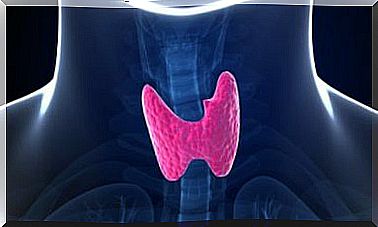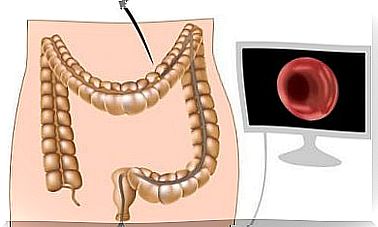Sometimes Sighing Means More Than We Think

It is said that a sigh can be the answer to things that have not yet been resolved, including a lot of sighs that encompass more love than a kiss.
Is there a grain of truth in these ancient sayings? It’s kind of weird to see how the world of emotions, including literature and popular psychology, have formed a very romantic picture of our human habit of sighing.
Either way, sighing is more than a purging habit we perform to release stress. There is hidden sadness in it from a memory that is still quite painful. When people sigh for some reason, it’s usually to survive.
In this article we therefore want to explain what function sighing can have in our daily life. We are sure that this information will be very helpful to you.
Sighing is part of our life cycle
Sometimes we sigh without being aware of it. It’s very possible that you never realize it when you sigh. But actually, as humans, we sigh on average no less than twelve times an hour. This is really unbelievable, considering that during those twelve times your brain sighs every time without you even knowing it saves your life.
Let’s explain this.
The ‘sigh buttons’ of our brains
According to a study published in Nature Magazine , our brains determine for us what kind of breathing we need.
During this study it was discovered that there are two groups of neurons hidden in this ‘great computer’. At the time, the scientists conducting this study decided to call this curious group of neurons “sigh buttons.”
This provocative name stands for something that is actually a perfect mechanism. We can describe this mechanism in the following way:
- Sometimes the air sacs in the lungs can collapse.
- When this happens, our lungs are no longer able to effectively exchange oxygen for carbon dioxide.
- These two groups of nerve cells, also known as ‘nerve knobs’, immediately pick up on this problem and immediately come to the rescue. These buttons form two small structures that can be found in the brainstem.
- One by one, these nerve buttons command us to sigh. This enables us to reopen the collapsed air sacs. As a result, twice as much oxygen ends up in the lungs than with normal breathing.
- This is something we do completely unconsciously. Nevertheless, as we mentioned earlier, we do this about twelve times an hour. This is how we as humans restart the cycle of life.
Emotional sighing
We now know that we sigh to stay alive. This vital act of survival explains why we sigh unconsciously so often.
However, there are also times when we sigh emotionally or consciously. We can explain this way of sighing in the following way:

- Sighing is a way to release us emotionally when faced with a stressful or frustrating situation.
- Many people heave a deep sigh when things don’t go the way they would like. For example, when we try to do something complicated, be it physically or mentally, and it doesn’t turn out the way we hoped.
- In this case, sighing acts in the same way as a chimney, only to release sadness and worry instead of smoke. That breath that is kept for the person who is missed.
- This information is not only strange, but actually very interesting. Karl Teigen is a well-known scientist working at the University of Psychology in Oslo, Norway, and an expert on emotional sighing.
- According to him, we sigh to empathize with another human being. When we hear a friend or family member sigh, we interpret this gesture as negative emotionally. It’s as if this gesture means that the person needs emotional support.
That’s why Dr. Teigen also believes that emotional sighing responds to an instinct to join our social group.
Take a deep breath and relax
As we know, our brain itself has the job of keeping us alive. However, we can deduce from this that people can breathe in different ways, depending on the moment and importance.
So try practicing mindfulness or yoga, practices that can also teach us to breathe in different conscious and controlled ways to get better results:
- To help us be more present in the present moment.
- To combat stress and be healthy.
- And finally: to meditate and make us aware of ourselves and our interests.

We recommend the following: learn to sigh. With each breath you release tensions and worries and this restores that ‘inner life cycle’.
Therefore, try to set aside twenty minutes every day for the following exercise:
- Find a quiet place where you can rest mentally.
- Sit with your back straight.
- Push your chest forward and place your hands on your lap.
- Breathe in deeply through your nose for four seconds, then hold your breath for four seconds. Then let out a loud and long sigh that lasts seven seconds.
After doing this exercise daily for a while, you will notice a remarkable difference in both your body and mind.









